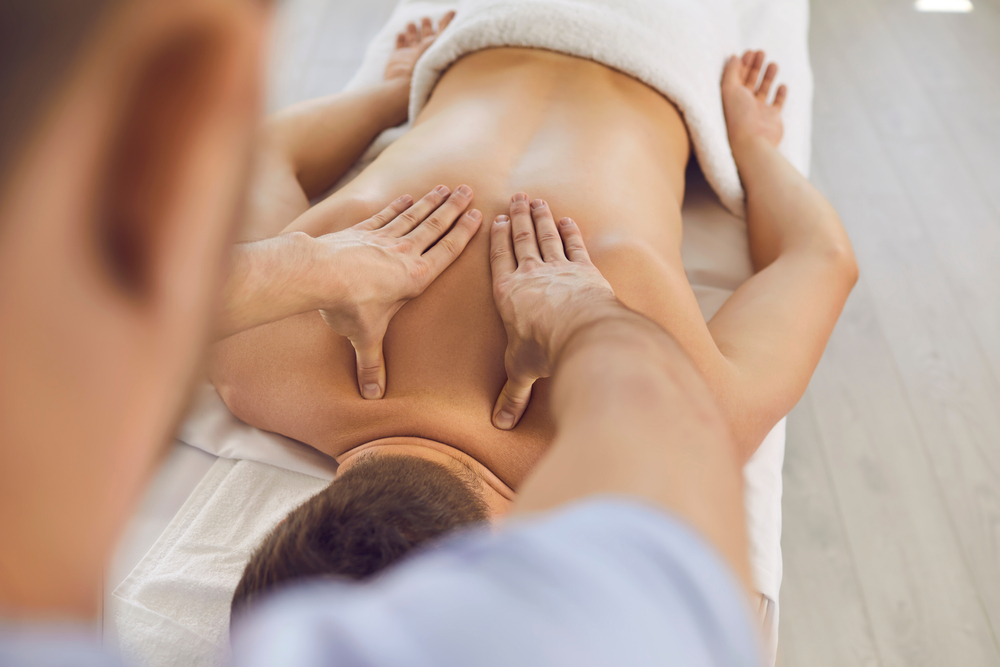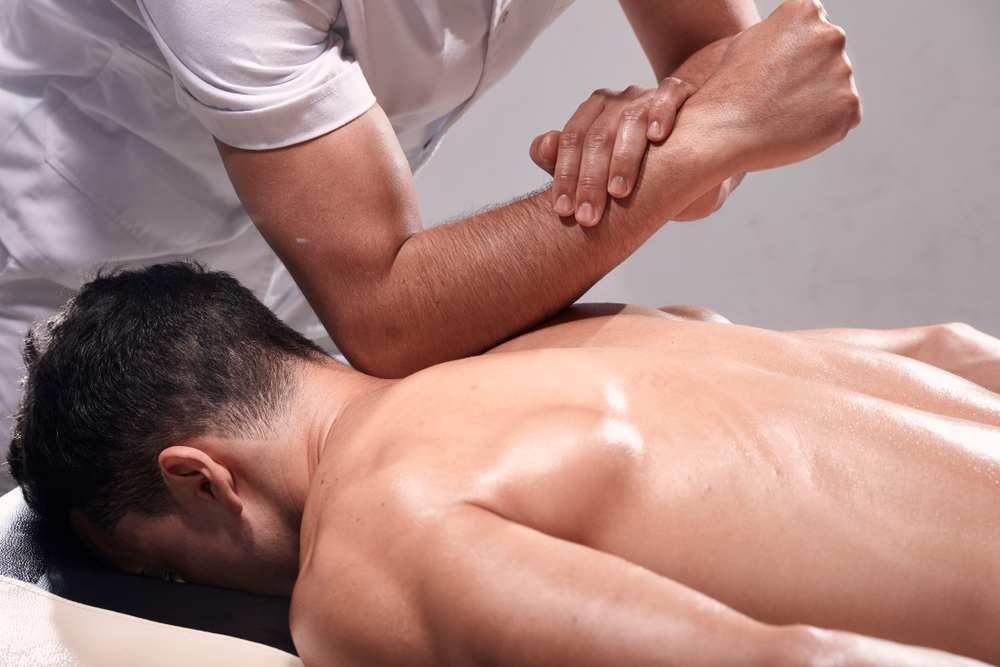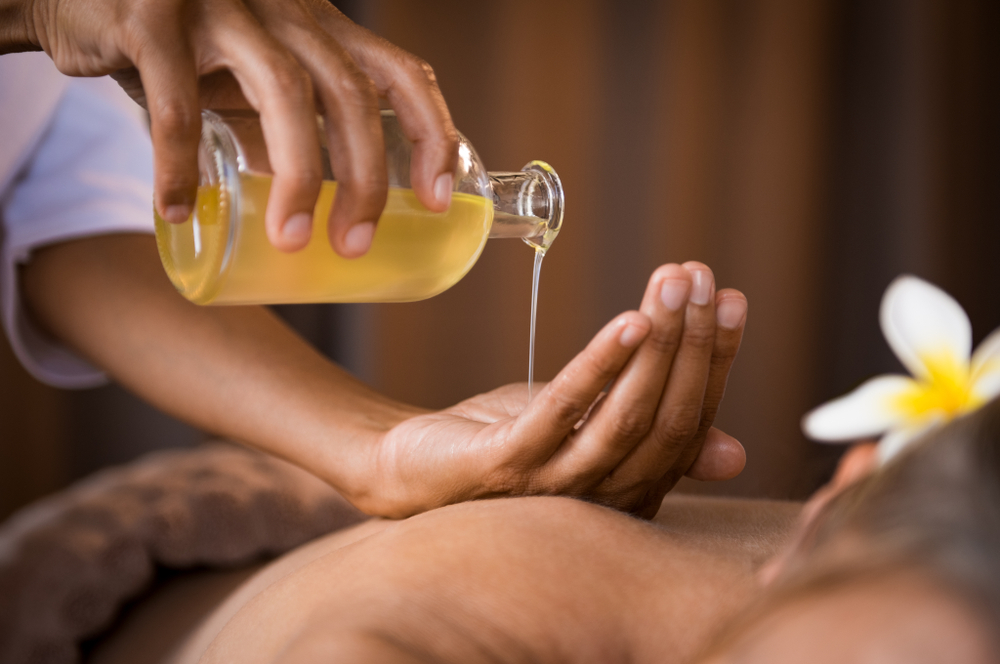
Deep Tissue Massage and Its 10 Benefits
The goal of deep tissue massage is to release long-term tension from muscles located deep within the body. Slow motions that apply direct pressure or friction over the muscle fiber are part of deep muscle methods.

What is Deep Tissue Massage?
Deep tissue massage is mainly used to treat muscle problems. These include injuries and strains from sports.
This method uses slow, deep strokes. They have sustained pressure to reach the deeper muscles and connective tissues.
This technique aims to dissolve scar tissue that forms after injury. It also aims to relieve tension in the muscles and tissues.
Benefits of Deep Tissue Massage
Deep tissue massage is really good for your body in many ways. Here’s how it can help you:
1. Relieves Muscle Tension
It targets the inner layers of your muscles. It’s used to treat muscle and tendon injuries, pain, and stiffness in your major muscle groups and joints.
2. Improves Posture
By targeting knots and tension in the back and neck, deep tissue massage can help to correct poor posture.
3. Reduces Chronic Pain
Research has found that Deep Tissue Massage can potentially help ease pain from conditions like chronic back pain, plantar fasciitis, fibromyalgia, and osteoarthritis.
4. Promotes Faster Healing
The increased blood flow caused by massage could help with muscle recovery after physical activity and injury.
5. Reduces Anxiety and Stress
Deep tissue massage is a great way to kick stress to the curb and boost your overall well-being. It targets those deep muscle tensions that can really get under your skin. When you’re feeling worn out, your body pumps out cortisol, the stress hormone. By dialing down those cortisol levels and helping you chill out, deep tissue massage can amp up your sleep quality, mood, and energy, and dial down the stress.
6. Lowers Blood Pressure and Heart Rate
According to the study published in April 2008, the Journal of Alternative and Complementary Medicine found that deep tissue massage can help reduce blood pressure and heart rate.
7. Improves Athletic Recovery and Performance
Deep tissue massage is a valuable method for aiding recovery post-injury or surgery. It aids in diminishing inflammation and swelling, enhancing the circulation of blood and lymph fluids, and alleviating discomfort. This therapy can be particularly advantageous post-surgery, fostering pain reduction and better healing. Before proceeding, it is advisable to consult your doctor regarding pain management.
8. Helps with Labor and Delivery Pain
For pregnant women, it can help to ease labor and delivery pain.
9. Improves Flexibility and Mobility
Deep tissue massage helps improve joint flexibility and range of motion by targeting knots and adhesions in deep muscle tissue. By using intentional deep strokes and pressure, it breaks up adhesions, increases blood and lymph circulation, and reduces chronic pain while boosting flexibility and motion range.
10. Gets Rid of Toxins
This massage helps get rid of bad stuff from your muscles.
Why Should You Get a Deep Tissue Massage?

Choosing a deep tissue massage can be beneficial for several reasons:
- A deep tissue massage focuses on tricky muscles. It uses strong pressure to untangle knots and release deep tension. This technique works wonders. It helps people with ongoing pain or specific muscle problems.
- Research shows that deep tissue massage eases pain. It also boosts mobility. It tends to do a better job than other massages when it comes to relieving pain.
- It speeds healing after an injury. It helps you recover faster by working on deep and surface tissues.
- It helps with many conditions. These include sports injuries and fibromyalgia. Also, plantar fasciitis, high blood pressure, sciatica, and tennis elbow.
- Massages, like deep tissue ones, can often ease stress, anxiety, and depression. They boost your mental well-being.
- It improves sleep. It also boosts athletic performance. And it helps break down scar tissue. These traits add to its allure across diverse groups.
Deep tissue massage has many benefits. But, it uses firm pressure and may not be right for everyone. This is especially true for those with certain health conditions. It’s smart to consult a healthcare provider before a deep tissue massage. This will ensure it’s safe and good for you.
What to Expect
When you get a deep tissue massage, it’s a strong and focused massage that helps with muscle pain deep in your body. You’ll talk with the therapist first about where it hurts.
The massage uses firm pressure and slow strokes, and it can feel a bit uncomfortable, but it should never hurt too much. The session usually lasts about an hour or so. After the massage, you might feel sore for a day or two, but drinking water can help.
This type of massage is really good for long-lasting relief from deep muscle pain and making your muscles more flexible. The room is usually quiet and calm to help you relax.
Learn about What Is Aromatherapy Massage?
Deep Tissue Massage vs. Other Techniques
Comparing deep tissue massage to other massage techniques highlights its unique approach and benefits. Here’s a comparison with some other popular massage methods:
Deep Tissue Massage vs. Swedish Massage
| Deep Tissue Massage | Swedish Massage |
| Focuses on the deeper layers of muscles and connective tissues, using firm pressure and slow strokes. It’s ideal for chronic pain, muscle knots, and tightness. | More gentle and relaxing, this technique uses softer strokes on the topmost layers of muscles. It’s suited for relaxation, stress relief, and increasing blood circulation. |
Deep Tissue Massage vs. Sports Massage
| Deep Tissue Massage | Sports Massage |
| While it can be beneficial for athletes, it’s generally aimed at addressing deep-seated muscle tension and knots for various individuals. | Specifically designed for athletes, focusing on areas of the body that are overused and stressed from repetitive movements. It helps in improving performance, preventing injury, and reducing recovery time. |
Deep Tissue Massage vs. Trigger Point Therapy
| Deep Tissue Massage | Trigger Point Therapy |
| Works on broader areas to release muscle tension and knots. | Focuses on specific areas of tight muscle fibers that can form in muscles after injuries or overuse. This therapy is more about pinpointing and addressing these specific ‘trigger points’. |
Deep Tissue Massage vs. Shiatsu
| Deep Tissue Massage | Shiatsu |
| Utilizes Western massage techniques with a focus on muscle layers and connective tissue. | A Japanese form of massage that uses finger and palm pressure on different points of the body, based on the concept of energy pathways in the body. It’s more about balancing energy flow than working out muscle knots. |
Deep Tissue Massage vs. Thai Massage
| Deep Tissue Massage | Thai Massage |
| Primarily involves applying pressure and manipulating muscle tissue. | Combines acupressure, Indian Ayurvedic principles, and assisted yoga postures. It’s more dynamic, involving stretching and movement, and is done with the client fully clothed. |
Deep Tissue Massage vs. Reflexology
| Deep Tissue Massage | Reflexology |
| Focuses on relieving tension throughout the body. | Based on the theory that there are reflex points on the feet, hands, and head linked to every part of the body. It’s more about stimulating these points to improve overall health. |
Deep tissue massage is particularly effective for chronic pain and deeply rooted muscle tension, making it distinct from other forms of massage that may focus more on relaxation, energy balance, or specific sports-related needs. The choice between these techniques largely depends on individual needs and health conditions.
Finding a Massage Therapist
When looking for a great massage therapist, here are a few things to keep in mind:
- Seeking a recommendation or referral from a healthcare provider.
- Check out a reliable database such as the American Massage Therapy Association for your search.
- Researching a massage therapist’s experience, training, and qualifications.
- Ensuring that a massage therapist is open to collaborating with other healthcare providers, particularly when an individual is receiving treatment for a health issue.
- Ensuring that a massage therapist comprehends individuals’ health conditions or concerns, and assessing their proficiency in addressing those particular requirements.
- Check to see if your health insurance covers the type of massage treatment and if any restrictions apply!
The Bottom Line
Deep Tissue Massage packs a punch. It eases chronic pain, muscle tension, and musculoskeletal troubles. This technique isn’t a normal massage. It’s about slow, deep strokes and steady pressure. That’s what sets it apart.
It’s like a superhero for your muscles and connective tissue. It breaks down scar tissue and boosts blood flow to sore spots. It helps you chill out and feel good inside and out. Are you looking to bend like a yogi or bounce back from an injury? Or do you just want to unwind and recharge? Deep Tissue Massage has your back for both body and mind.
And the best part? Its benefits last long after you hop off the massage table. They keep you on track for a healthier, happier life. So, if you’re all about leveling up your well-being, this massage is a game-changer!
FAQ
-
What Are Some Aftercare Tips Post Deep Tissue Massage?
Tips on maximizing the benefits of your Deep Tissue Massage, including hydration and rest, to help your body recover and extend the positive effects of the treatment.
-
How Often Should I Get a Deep Tissue Massage?
Recommendations on the frequency of Deep Tissue Massage sessions for optimal benefits, which can vary depending on individual health goals and response to therapy.
-
How Does Deep Tissue Massage Compare to Shiatsu and Thai Massage?
Explore the contrasting approaches of Deep Tissue Massage with Shiatsu’s energy balancing and Thai Massage’s dynamic stretching, highlighting their unique benefits and techniques.
-
Is There Any Discomfort During Deep Tissue Massage?
Understand that while Deep Tissue Massage involves firm pressure, any discomfort should be within manageable limits, and communication with the therapist is key for a comfortable experience.
-
How Does Deep Tissue Massage Aid Injury Recovery?
Learn about the role of Deep Tissue Massage in accelerating injury recovery, reducing scar tissue, and enhancing blood flow to injured areas for faster healing.





